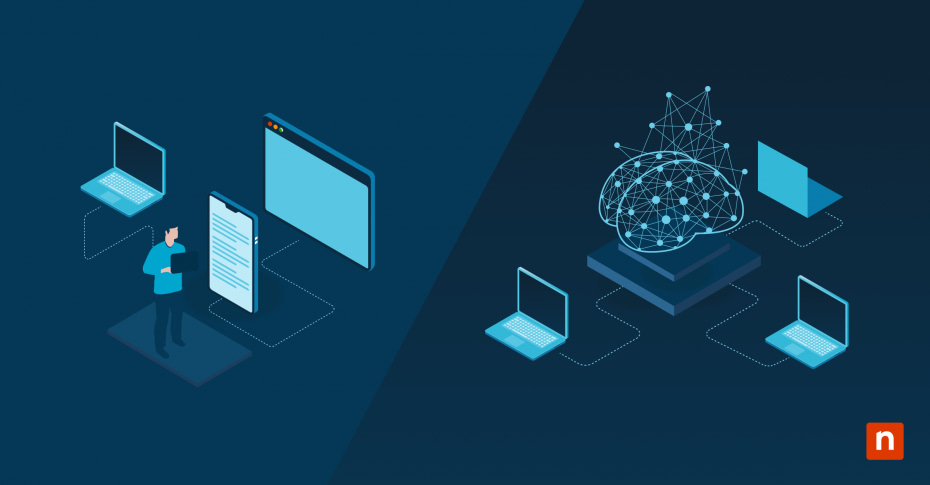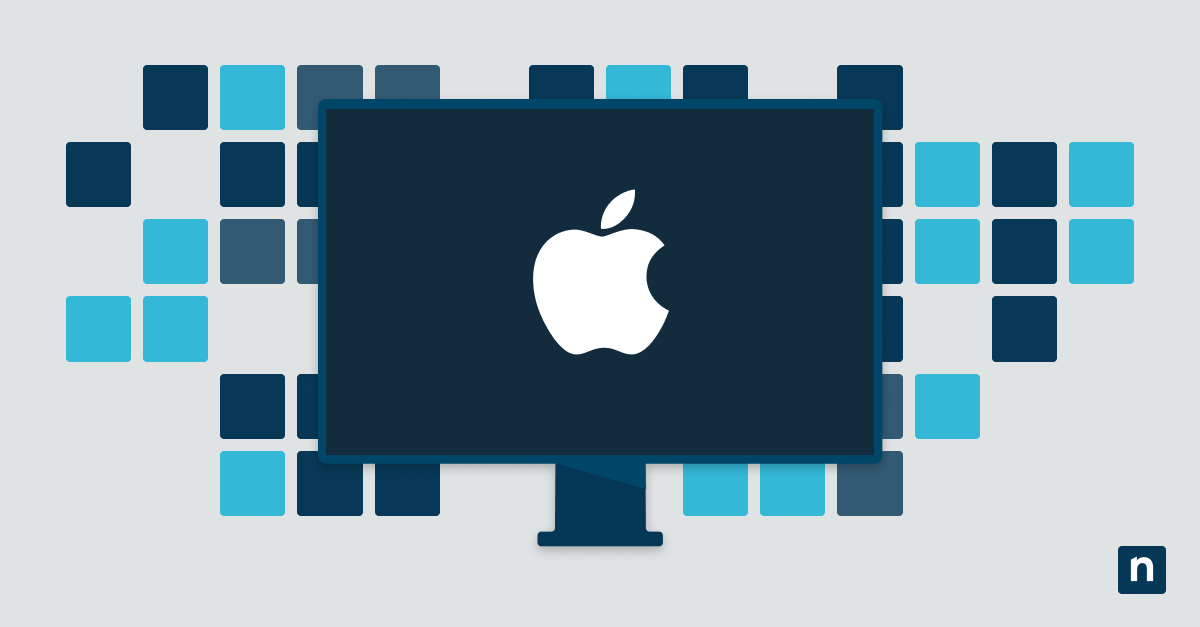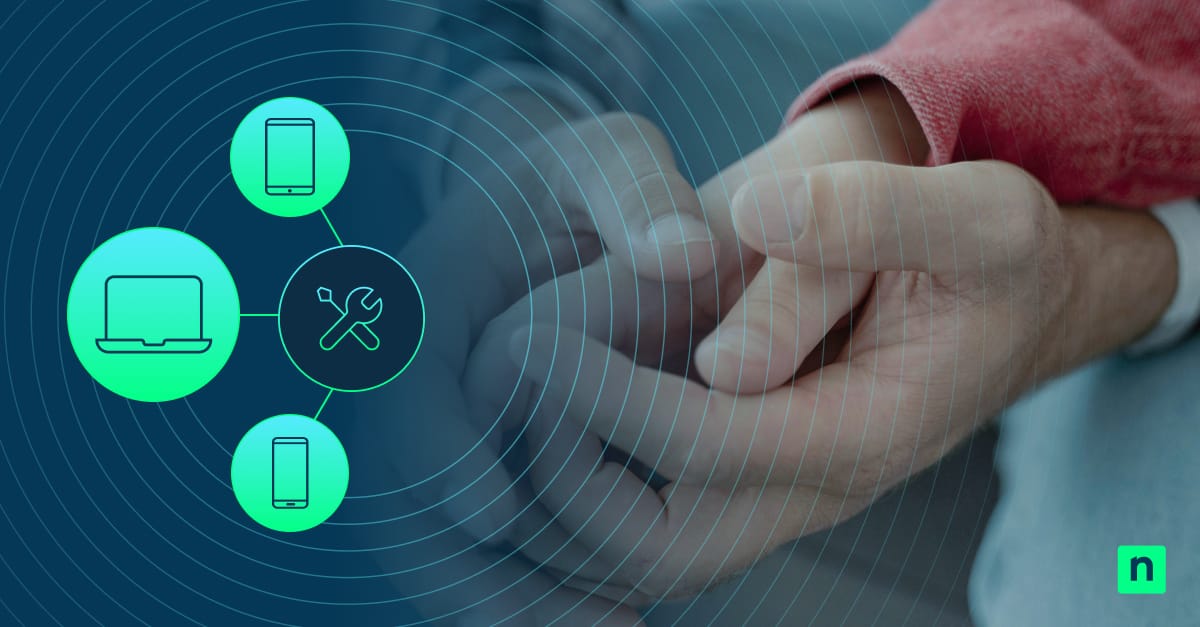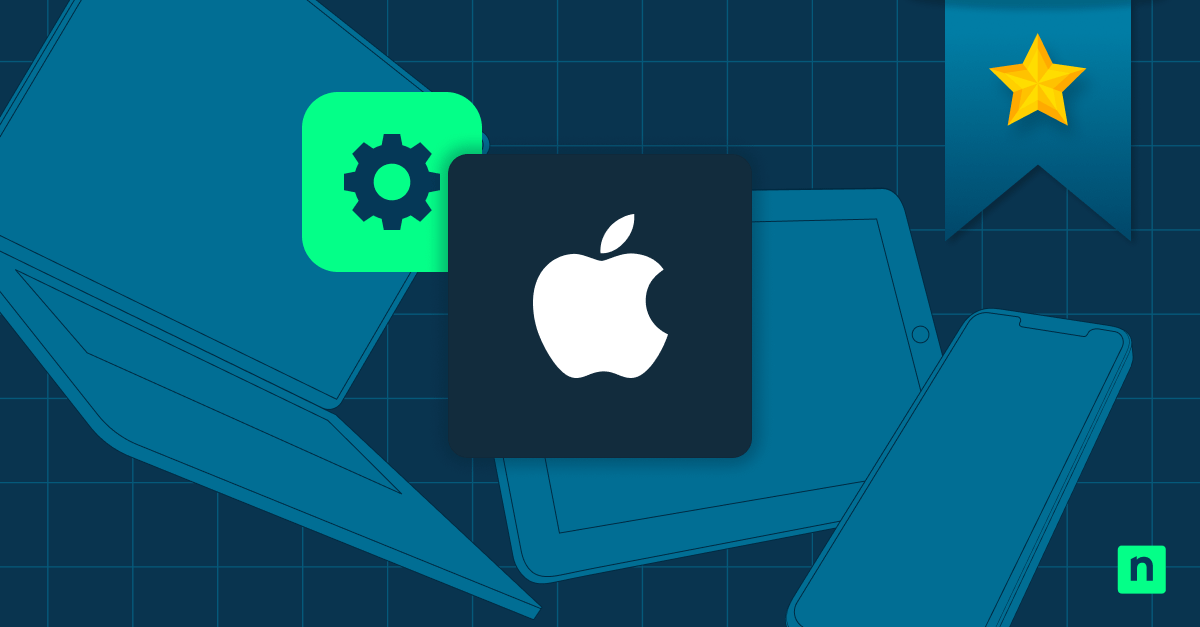Understanding Supervised vs. Unsupervised Devices in Mobile Device Management (MDM)
Are you finding it challenging to control and secure the mobile devices used by your employees? The solution may lie in a deeper understanding of Mobile Device Management (MDM), particularly the difference between supervised and unsupervised devices. This seemingly small distinction can greatly impact how effectively you manage and secure your mobile fleet, influencing productivity, data protection, and overall compliance. Let’s unravel this mystery and discover how making the right choice can empower your business.
Supervised vs Unsupervised Devices – What is The Difference?
Mobile device management (MDM) distinguishes between “supervised” and “unsupervised” devices based on the level of administrative control achieved through device supervision. Supervised devices offer granular control over settings, security, and app management, making them ideal for corporate or educational environments where strict control is needed.
Unsupervised devices, on the other hand, lack the same level of device supervision and provide limited control, making them more suited for BYOD scenarios where user autonomy is valued. Understanding this distinction is crucial in choosing the right MDM approach.
Supervising iOS And Android Devices
Supervising iOS devices offers a multitude of benefits, especially for businesses and schools needing robust control. This supervision gives administrators granular control over device settings, policies, and restrictions, bolstering security measures and data protection while ensuring alignment with organizational guidelines.
App management is also simplified, with seamless installations, updates, and configurations. Security is heightened through features like disabling risky functionalities and enforcing strong passcodes. Device enrollment is streamlined with Apple Business Manager or School Manager, and the user experience becomes customizable to meet specific needs. In contrast, unsupervised iOS devices lack this level of control, hindering security policy enforcement, app management, and user experience customization.
While Android lacks the exact “supervised mode” concept, it does offer comparable benefits through its Enterprise work profiles and fully managed device modes, often referred to as Android supervised mode. These include isolating work data in a separate profile, granular device management within that profile, enhanced security features like remote actions and app control, and the flexibility to customize solutions further.
Essentially, though implementation details differ, supervising iOS and Android devices yields similar advantages: heightened control, enhanced security, and streamlined management. This makes them well-suited for enterprises and other settings where device management is paramount. For the remainder of this post, we will delve deeper into the specifics of supervising iOS devices and explore the tools and techniques available to administrators.
Features and Capabilities for Supervised Devices
Supervised devices offer administrators and organizations a higher degree of control over iOS devices, primarily through an MDM (Mobile Device Management) solution. Features exclusive to supervised devices include:
- Single App Mode/Kiosk Mode: Locks the device to a single app or a limited set of apps, ideal for specific use cases like point-of-sale systems or information kiosks.
- Global HTTP Proxy: Allows organizations to filter and monitor all web traffic for supervised devices.
- Web Content Filter: Provides granular control over accessible websites and web content.
- Cellular Data Restrictions: Restrict specific apps from using cellular data, helping manage data usage.
- Silent App Push: Install or update apps silently without user interaction, ensuring devices have the latest software.
- Prevent Removing Apps: Prevent users from deleting pre-installed or managed apps.
- Disable iMessage and FaceTime: Control communication features to limit distractions or inappropriate use.
- Advanced Restrictions: Apply additional restrictions like disabling AirDrop, restricting access to the App Store, and managing other device settings.
Supervised vs Unsupervised devices
Unsupervised devices are the default state for most iOS devices. They offer users more freedom and flexibility, but with less control for administrators. Features available for unsupervised devices include:
- Standard Device Management: Basic device management capabilities like remote lock and wipe are still possible through an MDM.
- User-Installed Apps: Users can freely download and install apps from the App Store.
- Customization: Users can personalize their device settings, backgrounds, and app layouts.
- Full Access to Features: All built-in iOS features and functions are available without restrictions.
Advantages and Disadvantages of Using Supervised vs. Unsupervised Devices
Supervised devices, such as those used by an android supervised user, offer organizations a high degree of control and security. They allow organizations to tailor devices for specific use cases and streamline management while preventing unauthorized changes. However, this enhanced control comes at the cost of user freedom and customization, making them less ideal for personal use. Additionally, they may require additional setup and configuration.
Unsupervised devices, on the other hand, provide users with greater flexibility and a familiar experience, making them suitable for personal and BYOD environments. However, the increased user freedom means administrators have limited control and the devices are less secure for sensitive data, potentially requiring additional security measures in corporate environments.
Streamline Mobile Device Management with NinjaOne MDM
NinjaOne MDM is your comprehensive solution for managing mobile devices in the workplace. This platform streamlines the management of both iOS and Android devices, offering enhanced security measures like remote lock/wipe capabilities and passcode enforcement. With NinjaOne MDM, you can ensure compliance with company policies, automate routine tasks like software updates, and gain valuable insights into device health and inventory.
This all-in-one solution saves IT teams valuable time, reduces the risk of data breaches, and boosts productivity by ensuring devices are always up-to-date and running smoothly. Take control of your mobile ecosystem with NinjaOne MDM and experience a new level of efficiency and security.
Supervised vs Unsupervised Use Cases
Mobile device management (MDM) distinguishes between “supervised” and “unsupervised” devices based on the level of administrative control they allow. Supervised devices are ideal for environments needing strict control, such as:
- Corporate-owned devices where security and policy enforcement are paramount.
- School-issued iPads locked into educational apps and content filtering.
- Kiosk devices displaying specific information or performing single tasks.
Unsupervised devices offer more flexibility and are better suited for scenarios like:
- Personal devices used in BYOD (bring your own device) programs.
- Small businesses with limited IT resources needing basic device management.
- Employee-owned devices where personal use is allowed alongside work tasks.
Security Policies for Supervised and Unsupervised Devices
In supervised environments, typically seen with corporate-owned devices like those in iOS supervised mode MDM, administrators have extensive control. This allows for remote management, including locking or wiping the device, restricting certain apps or features, and enforcing stronger password policies. Additionally, supervision enables stronger security by preventing unauthorized system changes and blocking unapproved apps.
Conversely, unsupervised devices, often personally owned, give users more control over their device, including the ability to remove management profiles and potentially bypass security settings. This flexibility, however, comes with increased risks, such as data leakage, vulnerability to unpatched software, and user-induced errors. Ultimately, the choice between supervised and unsupervised devices depends on the specific use case, device ownership, and desired balance between security and user autonomy.
How to Configure a Supervised Device
A. Steps to configure devices as supervised:
1. Preparation: Ensure you have a compatible macOS device and download Apple Configurator 2 from the App Store.
2. Connect: Connect the device you want to supervise to your computer using a USB cable.
3. Apple Configurator 2:
- Open Apple Configurator 2 and select the connected device.
- Choose “Prepare” and select “Manual Configuration.”
- Check “Supervise devices” and “Allow devices to pair with other computers.”
- Optionally enroll in an MDM (Mobile Device Management) solution.
- Follow the remaining steps in Apple Configurator 2 to complete the process.
B. What are the methods of unsupervised configuration?
There are no direct methods for “unsupervised” configuration in the sense of configuring a device without supervision. However, some features and restrictions on a supervised device can be adjusted or removed using the MDM solution or Apple Configurator 2.
C. Necessary tools:
- Apple Configurator 2: Required to supervise devices and manage various settings.
- Apple Business Manager/Apple School Manager: Optional but recommended for efficient device management, especially in larger deployments.
- Mobile Device Management (MDM) solution: Optional but useful for remote management and configuration of supervised devices.
NinjaOne MDM integrates with supervised devices by:
- Streamlining enrollment and configuration: Makes it easy to add devices and apply settings.
- Enhancing security: Offers robust app management, security policies, and remote troubleshooting.
- Providing real-time monitoring and reporting: Enables administrators to track device status and compliance.
- Leveraging supervised mode restrictions: Enforces stricter policies for enhanced security.
- Integrating with Apple Business/School Manager: Simplifies device enrollment and management in corporate or educational environments.
This comprehensive integration gives administrators greater control, security, and efficiency in managing supervised devices.

Conclusion
Key Differences Between Supervised and Unsupervised Device Configuration
Supervised and unsupervised modes present distinct approaches to device configuration, each with unique features and implications. Supervised mode, requiring Apple Configurator 2 and often an MDM solution, offers extensive control over device settings, restrictions, and apps. This makes it ideal for environments prioritizing strict usage policies and security, like schools or enterprises. Unsupervised mode, on the other hand, provides greater user flexibility and is more suited for personal use or BYOD scenarios. It involves a simpler setup process and fewer restrictions, aligning with environments where user autonomy and personalization are valued.
Tailored Recommendations for Diverse Company Needs
The choice between supervised and unsupervised mode hinges on a company’s specific needs and priorities. For educational institutions and enterprises seeking stringent control over device usage and security, supervised mode is the optimal choice. This allows for enforcing policies, restricting content, and managing apps effectively. In contrast, companies with BYOD policies or those valuing user flexibility should opt for unsupervised mode, striking a balance between control and individual autonomy.
For small businesses with limited IT resources, unsupervised mode with basic MDM enrollment can offer essential device management capabilities without excessive complexity. Conversely, large enterprises with complex IT infrastructure can leverage supervised mode alongside a robust MDM solution for comprehensive device management and security.
Supervised vs Unsupervised Devices FAQs
What is considered unsupervised?
In the context of device management, unsupervised refers to devices where users have full control and administrators have limited or no ability to manage settings, apps, or enforce security policies.
How do I make sure my devices are supervised?
For iOS devices, use Apple Configurator or Apple Business Manager to supervise them. For Android devices, enroll them in a mobile device management (MDM) solution that supports Android Enterprise and enable supervised mode.
Can you supervise an android device?
Yes, you can supervise an Android device. This can be achieved through Android Enterprise for corporate settings, Google Family Link for parental control, or third-party MDM solutions for more extensive management.
How to check if an iOS device is supervised?
The easiest way to determine if an iOS device is supervised is to navigate to Settings > General > About. If the device is supervised, you’ll see a message under the device name stating “This [iPhone/iPad] is supervised.” Additionally, your organization might have a custom message on the lock screen indicating supervision.
What are the management limitations of unsupervised iOS and Android devices?
Unsupervised iOS and Android devices have limited remote management capabilities, making it difficult to enforce security policies, restrict app usage, or remotely lock/wipe the device.
What is supervision in MDM?
Supervision in MDM is a mode that grants administrators extensive control over mobile devices, enabling remote management, enhanced security, and stricter policy enforcement.








